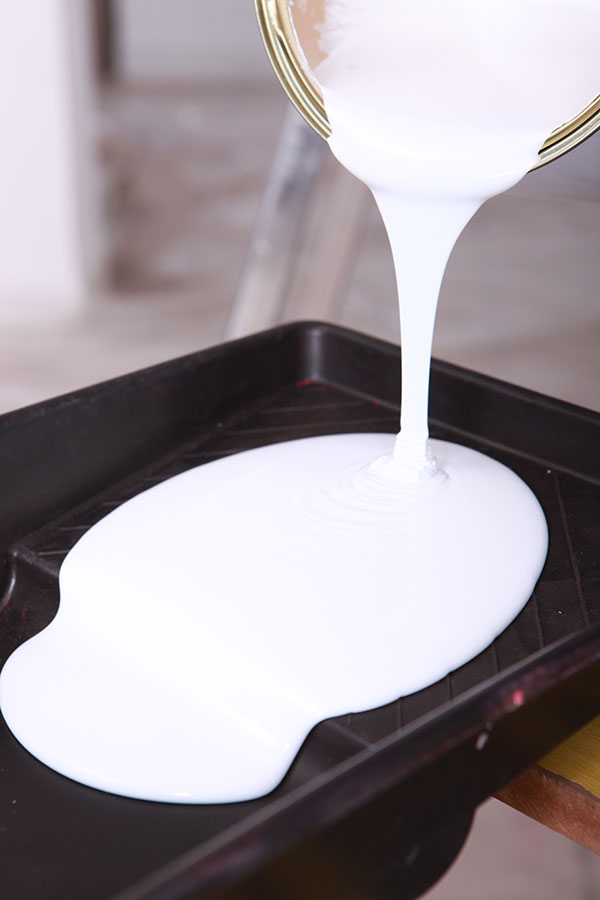You should have no problem getting paint to hold over stain. Be sure the surfaces you plan to paint are clean, the stain is totally dry and there are no loose chips on the surface. Prime the house with a pigmented stain sealer to prevent “flashes” or “hotspots” coming through the paint. Then, paint with a good quality paint and paint brush designed for the outdoors.
Can I Paint over stain? The exterior of our house is coated with stain and I want to paint over it. What are the steps to do this?
At what temperature can you begin to paint? Is it the same for oil and acrylic stains?
Once the temperature drops below about 55° F, paint becomes a little harder to work with. It is also easier to get sags in paint because of the slower dry times. Temperatures for latex and oil paints differ, as do stains and paints. Please read the label on the can of finish and follow the manufacturer’s recommendations.
I started repainting my kitchen and discovered that it had a layer of paint and a layer of wallpaper underneath. The surface on the wall started bubbling, but only in one spot. Can I remove the loose paper, prime with a good oil-based primer and then paint? I don’t want to remove the old paper.
Score around the paper that has lifted, remove the loose paper AND paste; then, prime the area, plus a couple of inches around the remaining paper. You will need to feather the edges with putty and then prime the putty. You should prime with a roller to create a stipple that matches the rest of the wall and then you should be ready for paint.
How can I be sure I get the right amount of paint in my dip… not too much, not too little?
It’s important to never fill a paint tray more than one-third full. Next, be sure to load the entire surface of your roller cover with paint. The best way is to roll it slowly down the tray into the paint, then back – several times – letting the roller cover absorb the paint. A paint tray/bucket grid is helpful to prevent overloading.
When is it self-defeating to keep using the roller before you re-dip?
For a perfect finish, never run the paint roller cover dry and always be sure to paint from a wet edge. To help reduce lap marks, paint walls from the top down, using an extension pole, and start painting the wall by rolling an “N” in a three-foot square. Then, fill in between the gaps, blending into your initial strokes as you go. Always work from the unpainted into the painted surface. When you start another area of the surface, repeat this process for the best results from your roller cover.
Is it faster to brush really quickly in short stroke or to take longer, slower brush strokes to make sure you get the best coverage? Or is there a time for each?
It’s a question of painting technique. Longer, full brush strokes are right for long runs at the ceiling line or in the corners of the walls. It’s better for consistent coverage with fewer brush marks and breaks in the cut line. In some situations, such as painting in bathrooms, on six-panel doors, closets and similar areas, a shorter brush stroke is your only option and works great. When cutting in, breathing out or holding your breath makes it easier to maintain a straight and consistent cut line.
How so you avoid some of the common brushing problems (brush marks, picture framing, etc.)? Is it a painting technique or the type of brush you use?
It’s having the right tool and painting technique. Having the right painting tool for the finish and project surface is critical to the finished product. With 11 families of paint brushes, we has the correct applicator for every finish and substrate. You’ll get easier, better results by having the correct painting tool for the finish. The packaging of all our “keepers” has all of the info needed to make a good choice for the type of paint and substrate to use them on. Brush marks are usually a result of running the brush too far per dip or from trying to put too much paint on per dip. Too much paint per dip will also cause runs and sags in the paint. It’s always a good idea to determine how the paint will finish out before you actually start the project. Deep tone paints have more chance of showing a difference between the brushwork and the roller. Cutting in one wall at a time and rolling as close as possible to the perpendicular wall or ceiling can help limit the picture framing.
Area's We Commonly Service
Dalkeith, Cottesloe, City Beach, Nedlands, Swanbourne, Mosman Park, Applecross, Claremont, Floreat, Mount Claremont, Crawley, Shenton Park, Subiaco, Mosman Park, Perth CBD, South Perth, North Perth, East Perth, West Perth and Booragoon.











